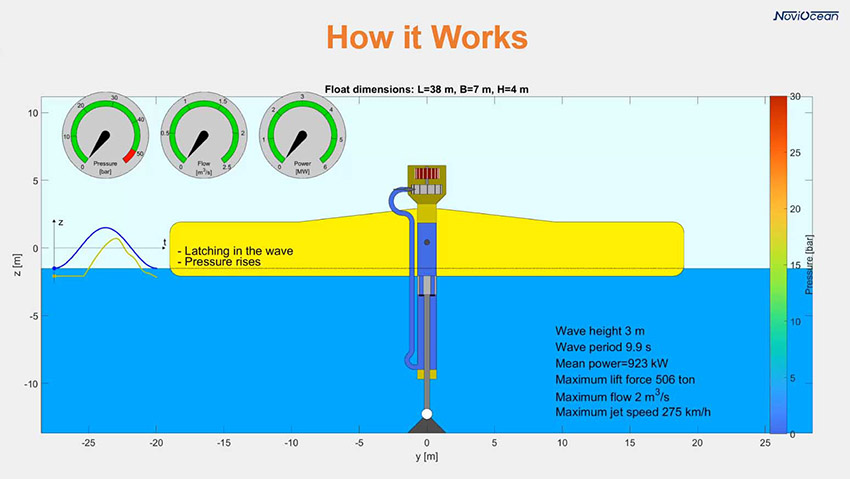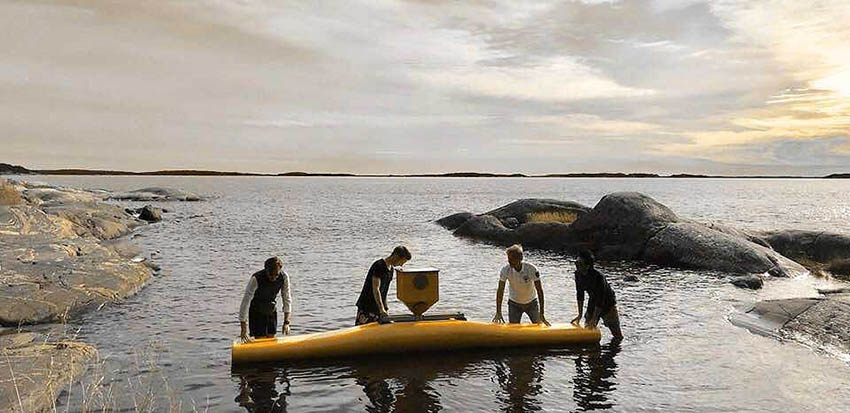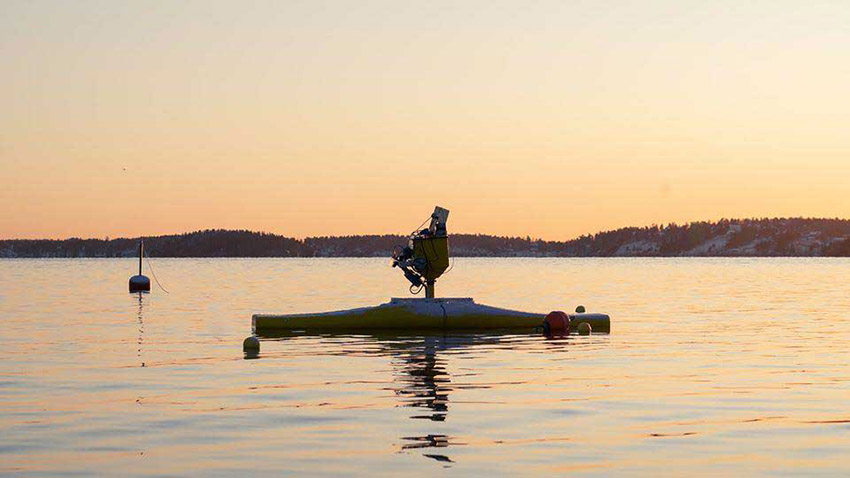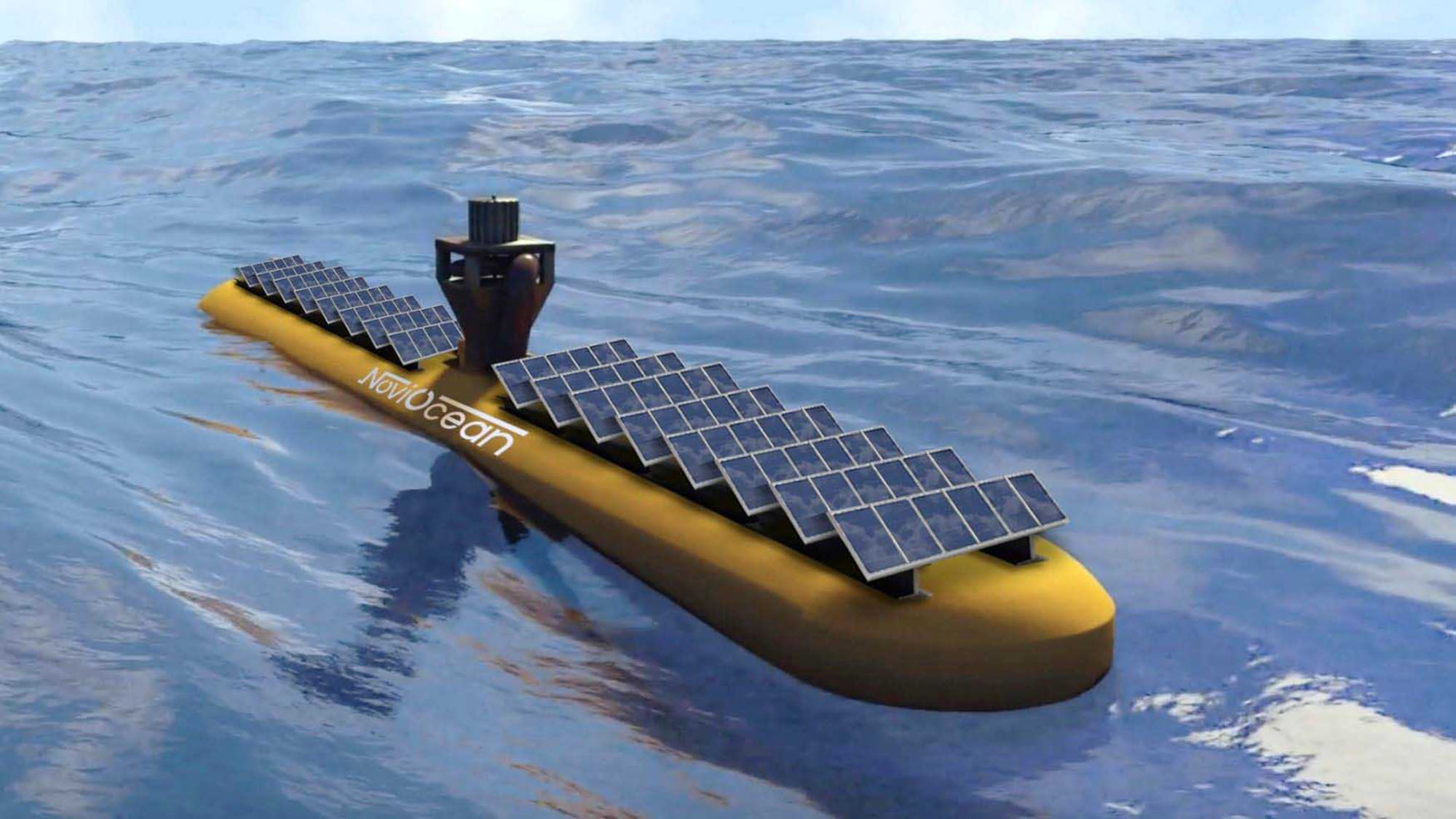Novige AB is a Swedish cleantech company that is in the process of developing and commercializing NoviOcean, a breakthrough wave energy converter (WEC) concept. “Saving the climate with profitable wave power” is their goal and driving motivation. The company’s long-term vision is to contribute to the reduction of fossil fuels in the energy sector on a global scale.
Novige currently has a small but highly competent core team of experts assembled to complement each other’s skill sets. This includes both technical expertise in scaling up wave energy technologies and other offshore marine projects to valuable business knowledge and experience in commercializing innovative cleantech solutions on a global market.
The team currently holds various awards and recognitions such as the EU Seal of Excellence, BlueInvest Seal of Investment Readiness, Guldstänk’s Innovator of the Year 2020, and Stena Line’s Propeller Prize 2021. Jan Skjoldhammer, Novige’s founder/CEO has also been titled the Mission Innovation Champion of 2020.
The team has been heavily involved in taking the NoviOcean concept from its cradle to the current technology readiness level (TRL) of 6. During this process, the team has been (and is being) supported by expert advisors from different universities as well as many research centers and organizations. Also, more than 40 Master’s and PhD students have over the years worked on optimizing the design and have assisted the team in different ways.
Easy Engineering: What are the main areas of activity of the company?
Novige AB: The main area of activity of the company is in offshore renewable energy. In Europe alone, offshore energy can deliver up to 100 GW of capacity by 2050, which means an annual market of €53 billion.
This is equivalent to satisfying about 10% of Europe’s electricity demand today, enough to meet the daily electricity needs of more than 76 million households. Deploying 100 GW of offshore energy will also mean creating a new industrial sector based firmly in Europe, and 400 000 skilled jobs across the supply chain.

According to the EU offshore energy strategies, this 100 GW will be divided to at least 60 GW of offshore wind and 40 GW of ocean energy (including wave and tidal). Novige, with its innovative WEC concept, NoviOcean, is directly targeting wave energy. With approximately 45% of Europe’s population living in coastal regions, wave energy can be a highly relevant way to readily deliver electricity exactly where it is needed.
Despite ocean energy being led by European companies with +90% of projects expected to be deployed in Europe by 2030, only 7% of the total global wave energy potential (about 5 TW wave compared to 0.5 TW tidal capacity) is in Europe, showing the true magnitude of its enormous potential. In other words, wave energy has enough theoretical potential (29 500 TWh/year) to supply the entire electricity demand of the whole globe (28 400 TWh/year)
On a global scale, ocean energy could reach up to 300 GW by 2050 which is enough to power 350 million households. This market will annually generate more than €100 billion of economic value as well as more than 650 000 new jobs over the entire supply chain.
E.E: Describe how your solution works.
Novige AB: To explain more about our solution, imagine a well-proven hydropower plant, but inverted and taken to sea, with ocean waves acting as a never-drying dam. We call it the “hydropower plant at sea (HPAS)” concept which is the main working principles of NoviOcean.
Explained in simple terms, each NoviOcean 500 kW unit has a 38×8 meter rectangular float that moves vertically up and down in every wave which creates up to 600 tons of lifting force. This force is then hydraulically transferred from the vertical cylinder and piston assembly connected to the sea floor, to a fast-spinning and highly efficient Pelton turbine-and generator assembly which generates the electricity. The electricity is then transferred through subsea cables to the electrical network.
NoviOcean represents the shape of the waves with a simple control mechanism. This allows for maximized performance while significantly improving the lifting capacity by a factor of 4-10 (10x better than the industry average).
Contrary to the competing solutions, NoviOcean uses simple, light-weighted, and well-proven parts allowing for a reliable and stable electricity output which leads to a lower cost of electricity. As an example, we can achieve a lower cost than a similar-sized offshore wind array after only 50 MW NoviOcean deployed.

E.E: What is innovative/special about your solution?
Novige AB: NoviOcean can produce a more stable output (compared to conventional renewables) without storage needs. Moreover, combined electricity production with the off-phased wind power, can provide a baseload of up to five times higher than just wind alone, thereby solving a huge part of today´s unstable grids. As a customer option, each NoviOcean unit can have additional solar PV panels on top of its float, further boosting the production with only a fraction of the cost compared to other existing floating PV solutions on the market.
Life cycle (LCA) emissions of NoviOcean is estimated at 17 kgCO2-eq./MWh (only 7% vs. EU grid emission factor). NoviOcean’s electricity can power around 750-1500 households/MW (depending on location). The units can be manufactured locally with readily available/recyclable materials.
A core target for us is to illustrate NoviOcean’s superb grid-balancing qualities, stable supply (no need for unsustainable batteries), reliability, low costs, and resource efficiency. Our revenue model and the simplicity/sustainability of the concept allow for local fabrication with common raw materials, improving its scalability, and creating jobs throughout the value chain.
Additionally, stable baseload supply and flexible grid balancing during peak hours will have a profound impact for at least 40% of the time, when winds do not blow, the sun does not shine, the fossils are burned the most, and the electricity costs are highest to the consumers and the environment.
Moreover, NoviOcean will facilitate the rapid acceleration of the clean energy transition on more than 200 EU islands that are currently dependent on fossil fuels as well as strengthen green alliance bonds between the EU and regions such as Africa, Latin America, Asia, and the Pacific where the need for innovation and sustainability is high and wave energy sources are abundant. Globally 2000 islands and a large number of remote locations are running mostly on diesel, and are therefore also highly relevant for our deployments.
Our float can be easily adjusted in size to give the optimal power performance based on the resource availability of the deployment site which unlocks a unique opportunity to locally manufacture, deploy, and operate our units using the available resources and knowledge base.

Therefore, as one of our key strategies for future rapid expansion, we will be offering large-scale licensing to shipyards and industrial companies around the globe to build and operate our NoviOcean units. This can ultimately empower the local/regional economy and job market.
E.E: At what stage is the market where you are currently active? What can you tell us about market trends?
Novige AB: The first known patents related to wave energy capture from ocean waves date back to the year 1799 followed by over 300 patents filed only in the UK from 1855 to 1973. Modern wave energy, however, was pioneered by Yoshio Masuda during 1940s and 1950s, especially in his concept of extracting power from the angular motion at the joints of a raft. After the oil crisis of 1973, the interest in wave energy was renewed with many researchers and universities working on different concepts.
With the recent global movement towards a 100% renewable energy mix, ocean energy concepts have once again gained renewed attention. Because of better support and more financing opportunities, various modern technologies have emerged during the past two decades. At the time of this interview, more than 100 different companies are developing their own ocean energy concept with about a third of them belonging to the wave energy sector.
Despite recent trends and relative improvements in the development of such concepts, and wave energy’s enormous global potential, previous technologies have so far not been very successful in introducing cost-effective solutions to the market. There are many complex systems that generate relatively low amounts of electricity compared to their mass and many moving parts. Such designs will lead to high and unattractive Levelized Cost of Energy (LCOE).
The current LCOE is still too expensive compared to already established electricity generation alternatives to make wave power competitive enough to incentivize more public and private financing that leads to faster technology development globally.
According to International Renewable Energy Agency (IRENA), the estimated levelized cost of electricity (LCOE) for wave energy technologies is expected to be in the range of 300 to 600 €/MWh for demonstration, with projections of 110 to 220 €/MWh for 2030 when taking economies of scale and learning into account.

Ours and extensive third-party simulations show that NoviOcean’s demonstration LCOE for the first 2-6 units, each rated at 500 kW will be well below 200 €/MWh directly from the start (depending on deployment site). Projections show that the costs will be further reduced to below 150 €/MWh for the first 5 MW array (next 10 units). Moreover, Novige AB plans to expand its product line-up to larger-scale NoviOcean models of 2 MW rated and higher per unit, reducing the LCOE even more in the future.
These estimations seem to be considerably lower than what is offered by other wave energy technologies and at the same level as of offshore wind power to date. The values tend to drop further when counting for learning effects and economies of scale. Therefore, it is expected that the costs would reach 25 €/MWh in our 2050 vision, which is less than 25% of IRENA’s lowest ocean energy projections and all fossil-based electricity generation technologies.
Moreover, as our projections are showing an initial cost of about 30-40% of what wind power had at its infancy (NREL, 2012), given the same learning rate, same difference gap is expected after maturity of the NoviOcean technology. Therefore, our team intends to improve this outlook by introducing a highly cost-effective and competitive way to harness utility scale ocean energy.
E.E: What estimations do you have for the years ahead? What is planned?
Novige AB: So far, our 1:5 scale prototype has been tested and validated in wave tanks and real offshore environments. After a final two weeks of testing at COAST wave tank laboratory in Plymouth in March of this year, the plan is to reinstall the prototype outside Stockholm in an offshore environment for long-term monitoring of its longevity and power performance. Visitors will be welcome to see it in operation, even to climb on board, and learn more this summer.
We previously received €2.1 million grant support from CINEA LIFE, a part of the EU Commission to design, construct, and demonstrate the full-scale pilot (rated at 500 kW) by 2025/26. The detailed design, environmental and feasibility studies for the full-scale pilot is expected to continue during 2023 and will be followed by construction, deployment, testing/validation, and certification until 2025/26.
During 2023, we also plan to receive another grant from the European Union to perform design studies and construct the hybrid solar PV system that is planned to be tested alongside the same prototype in offshore conditions.

Beyond that, our set target is to have contracted 100 MW globally by 2030. Calculations show that by 2030, NoviOcean’s LCOE would have reached 54 €/MWh on average, half of the set target by Ocean Energy Europe under the high growth scenario.
With the right support, we aim to reach a minimum global cumulative deployed capacity of 4 GW by 2050 (10% of the target set by the European Commission). That level of deployment is enough to help the technology reach the LCOE of 28 €/MWh on average, at the same level compared to onshore wind and solar in 2050, and approximately 60% of the cost expected for offshore wind. According to our estimations, this target roughly amounts to 12 B€ in sales. However, perhaps it is important to mention that this is only with reference to Europe, as the global potential is 6 times higher. Novige will be targeting this market by securing partnerships with global industrial companies as well as via licensing.
To know more about us, we encourage you to visit our website, www.noviocean.energy, where you can read more in our documents page as well as see complementary videos, and listen to our podcasts in our news & media page. .

